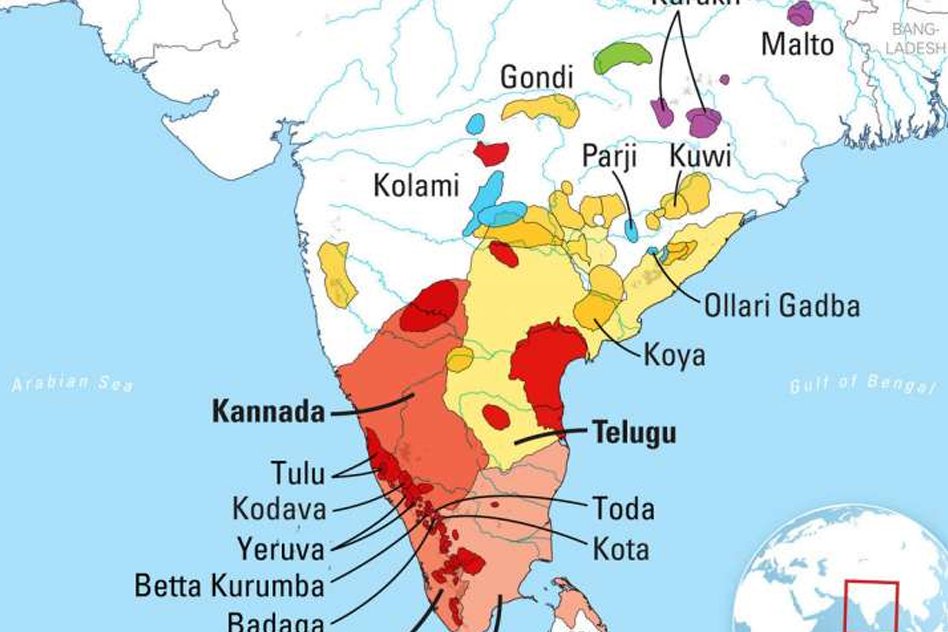
New Linguistic Analysis Shows Dravidian Languages To Be 4,500 Years Old
22 March 2018 12:06 PM GMT
A new linguistic analysis, co-authored by the University of Bristol, shows that Dravidian languages are 4,500 years old. The findings were published in the journal Royal Society Open Science.
The Dravidian language family’s four largest languages, Kannada, Malayalam, Tamil and Telugu along with 80 other varieties are spoken by around 220 million people across South Asia.
Dravidian languages 4,500 years old
An international team of scientists used data collected from native speakers from all previously reported Dravidian subgroups across southern and central India and surrounding countries.
South Asia, extending from Afghanistan in the west to Bangladesh in the east, is home to about six hundred languages of six large language families which include Dravidian, Indo-European and Sino-Tibetan.
Of the four largest Dravidian languages, Tamil is said to be the oldest. Tamil, along with Sanskrit is among the world’s classical languages. In Tamil, unlike Sanskrit, there a continuity between its classical and modern forms catalogued in various inscriptions, poems, religious texts and songs.
Lead author of the report, Annemarie Verkerk of the Max Planck Institute for the Science of Human History, said, “The study of the Dravidian languages is crucial for understanding prehistory in Eurasia, as they played a significant role in influencing other language groups.”
The report said that the geographical origin or the exact dispersal of the Dravidian languages cannot be established with certainty.
The research community, however, has come to a consensus that Dravidians are native to the Indian Subcontinent. The Indo-Aryans (Indo-Europeans) are said to have arrived 3,500 years ago in the subcontinent.
It is also believed that Dravidian languages had a wider reach in the West in the past as compared to today. Researchers also undertook a detailed investigation of 20 Dravidian varieties to find out when and where the Dravidian languages developed.
Vishnupriya Kolipakam, of the Wildlife Institute of India, also the study author, collected the contemporary first-hand data from the native speakers of a diverse sample of Dravidian languages. This sample represents all the previously reported Dravidian subgroups. Advanced statistical methods were used to find the age and the subgroup of the Dravidian language family at about 4000-4500 years old
New analysis said to be robust
This estimate is said to be more robust because not only does it combine suggestions from previous linguistic studies, but was also found to be consistent in a majority of the different statistical models of evolution considered in this study.
The estimated age also matches with the inferences from archaeology, that placed diversification of Dravidian into North, Central and South Branches at this age.
“Here we have a really exciting opportunity to investigate the interactions between these people, and other cultural groups in the area such as Indo-European and Austro-Asiatic on one of the great crossroads of human prehistory”, Author Simon Greenhill said.
 All section
All section













